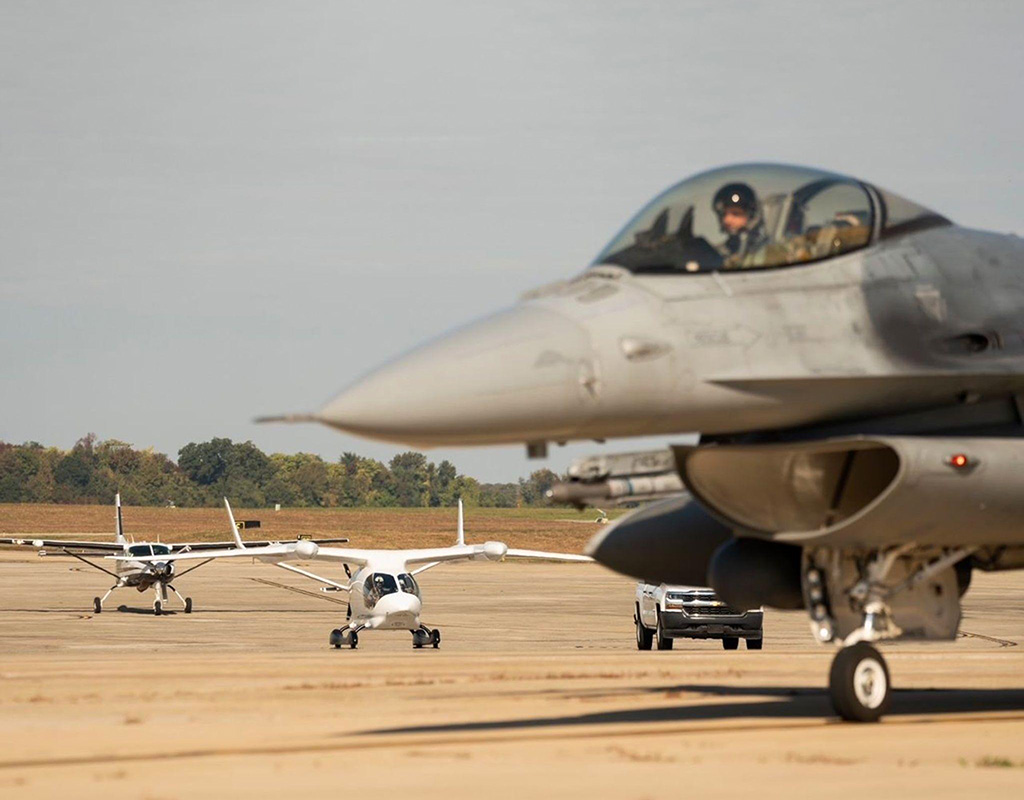
BETA Technologies’ aircraft Alia has concluded its first deployment with the US Department of Defense at Elgin Air Force base, the firm reports.
The deployment saw the conventional take-off or landing (CTOL) version of Alia undertake three months of experimental operations and training with the 413th Flight Test Squadron. Conducted through the Air Force’s Agility Prime programme, the deployment also formed part of a larger test and evaluation effort by the US Air Force to assess the usability of electric aircraft.
As well as BETA’s Alia CTOL, the deployment included a MobileDome simulator, which the BETA flight test team and USAF pilots used to rehearse flights and practice emergency procedures. BETA also installed a Level 3 DC fast-charger (350kW) — the first-ever electric aircraft charger at a DoD facility.
Highlights included:
Air Force-directed operational experimentation and training: Together, BETA and the 413th achieved mission assessments across a span of categories, including flight operations, maintenance support, and infrared signature characterisation. The missions from Duke Field, which ranged from short sorties to extended missions, averaged approximately $15 in energy per flight.
Performed the first simulated casualty evacuation mission with an electric aircraft: The 413th Flight Test Squadron asked BETA to participate in a simulated casualty evacuation (CASEVAC) scenario with the 41st Rescue Squadron. The CASEVAC mission was an exercise-style proof of concept with a scenario involving a simulated patient ( aka Rescue Randy), ground forces, a simulated Quick Reaction Force, an HH-60W and an ALIA. In this scenario, the HH-60W transported a simulated casualty from a forward operating base (FOB) to an operating location located in friendly territory, then returned to the FOB with the quick reaction force. The ALIA aircraft performed the patient transport to medical care from the operating location, relieving the HH-60W Jolly Green crew.
“This scenario demonstrates key impacts electric aviation can have on military services, including increase in response time at the FOB,” reported BETA. “The HH-60 was able to initiate the movement of the QRF sooner than if it had to move the patient to definitive medical care. The decision to transport the patient the total distance in the HH-60W vice stopping at an intermediate location is based on suitable runway availability and availability of an aircraft for transport such as a C-130.”
The mission also showed the decrease in resources required for electric aviation. A similar C-130 patient transport requires similar runway length and would require a crew of at least 3 and approximately $1,600 in fuel. The ALIA aircraft accomplished this simulated mission with a crew of two and an energy cost of approximately $5 in electricity.
Executed a maintenance recovery team mission: ALIA also completed a simulated maintenance recovery team (MRT) mission, delivering a simulated part collected from from Tyndall Air Force base for an F-35 Lightning II which had landed at Duke Field.
The ability to fly an MRT at distances normally relegated to driving opens possibilities for cost and man-hour savings, said BETA. “The cost estimate for a maintenance response of a home-unit based ALIA, involving two flight legs, would be approximately $25 in electricity and 1 hour of flight time. A standard F-250, covering the same geographical distance, would cost approximately $45 in fuel and equate approximately 4 hours of driving. A faster response time allows maintenance to be performed same-day and can directly improve downtime for advanced aircraft, resulting in other reduced costs for flying squadrons, such as unexpected lodging and per diem, as well as additional transportation costs to recover a fixed aircraft.”

